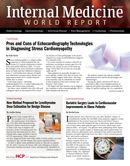Aging Associated with Defects in Beta Cell Ca2+ Dynamics
A group of international researchers led by Luosheng Li, MD, of the Rolf Luft Research Center for Diabetes and Endocrinology at the Karolinska Institutet, Karolinska University Hospital in Stockholm, Sweden, recently demonstrated that age-dependent decline in insulin secretion (and thus glucose homeostasis) from the beta cell in experimental mice models is associated with subtle changes in Ca2+ dynamics.

Although the decline in insulin secretion from beta cells is considered a major contributing factor to development of type 2 diabetes in people over age 65, the molecular mechanisms behind age-dependent deterioration in beta cell function had not been well understood.
A group of international researchers led by Luosheng Li, MD, of the Rolf Luft Research Center for Diabetes and Endocrinology at the Karolinska Institutet, Karolinska University Hospital in Stockholm, Sweden, recently demonstrated that age-dependent decline in insulin secretion (and thus glucose homeostasis) from the beta cell in experimental mice models is associated with subtle changes in Ca2+ dynamics. The changes are likely due to impaired mitochondrial function and to involve phospholipase C/inositol 145-triphosphate-mediated Ca2+ mobilization from intracellular stores. The study was published online in Diabetes on July 1, 2014.
In beta cells, fluctuations in cytoplasmic free Ca2+ concentration (Ca2+)i have very important physiologic consequences. Research suggested that if aging is associated with compromised mitochondrial function, in the beta cell it would lead to derangements in Ca2+ dynamics, leading to the loss of precise regulation of Ca2+ dynamics.
Three mouse models were used in the experiment: a premature aging phenotype, a mature aging phenotype, and an aging-resistant phenotype. The investigators used histochemical analysis, measurements of mitochondrial membrane potential in islets, spectral analyses of [Ca2+]i oscillations, and insulin release measurements to analyze data from the mice in the 3 models.
The conclusion that aging is associated with a progressive decline in beta cells mitochondrial function that negatively impacts Ca2+ dynamics is an important concept because it emphasized that even relatively modest changes in beta cell signal-transduction over time leads to compromised insulin release and a diabetic phenotype in mouse models.
